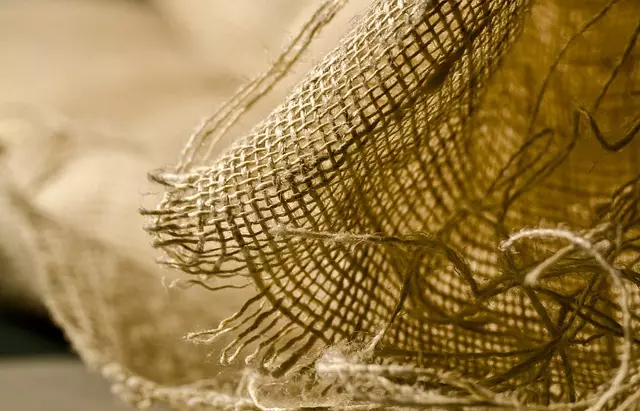Red Bali and Maeng Da kratom strains each offer unique benefits for pain management and injury prevention. Red Bali kratom is known for its strong analgesic and sedative effects, which are beneficial for chronic pain relief and promoting restful healing after injuries, potentially reducing the likelihood of re-injury. It's ideal for those who need relaxation and discomfort reduction. Maeng Da kratom combines both stimulating and sedative properties, making it suitable for individuals in physically demanding jobs or sports who need to manage pain while staying alert and focused. This dual effect may enhance performance and injury prevention through heightened awareness and endurance. When selecting between the two, consider personal needs and activity contexts, as each strain has distinct applications. It's important to consult healthcare professionals before using kratom, especially as part of a comprehensive recovery or wellness plan. Both strains, with their unique alkaloid profiles, can play a significant role in supporting injury recovery and prevention, but user tolerance and guidance from medical experts are crucial for effective use.
Kratom, a plant native to Southeast Asia, has garnered attention for its potential role in injury prevention and management. This article delves into the therapeutic properties of two distinct kratom strains: Red Bali and Maeng Da. By comparing these strains, we aim to elucidate their unique benefits in mitigating injury risks and aiding recovery. The subsequent sections will explore the efficacy of Red Bali Kratom in injury mitigation and post-injury recovery, as well as the potential advantages of Maeng Da Kratom in proactive injury prevention and comprehensive care following an injury. Understanding the nuances between these strains is crucial for those seeking natural alternatives to manage injuries effectively.
- Understanding Kratom's Role in Injury Prevention and Management: A Comparison of Red Bali vs. Maeng Da Strains
- Assessing the Efficacy of Red Bali Kratom for Injury Mitigation and Recovery
- Exploring the Potential Benefits of Maeng Da Kratom in Injury Prevention Strategies and Post-Injury Care
Understanding Kratom's Role in Injury Prevention and Management: A Comparison of Red Bali vs. Maeng Da Strains

Kratom, a mitragynoid plant native to Southeast Asia, has garnered attention for its potential roles in pain management and injury prevention. Two prominent strains, Red Bali and Maeng Da, are often contrasted for their distinct properties and effects. Red Bali kratom is renowned for its analgesic and sedative qualities, making it a popular choice for those seeking relief from chronic pain or recovering from injuries. Its ability to alleviate discomfort can be instrumental in preventing further injury by allowing the body to rest and heal properly. Conversely, Maeng Da kratom is celebrated for its balanced blend of stimulating and sedative effects, which can enhance focus and energy while managing pain. This balance might be particularly beneficial for individuals engaged in activities that require both mental acuity and physical endurance, potentially reducing the risk of injury through improved performance and awareness.
When comparing Red Bali and Maeng Da for injury prevention and management, it’s important to consider the specific context and needs of the individual. Red Bali kratom may be more suitable for those requiring a calming effect that supports rest and recovery, especially in the aftermath of an injury or during prolonged periods of healing. On the other hand, Maeng Da might be preferred by individuals who need to maintain alertness and energy levels while managing pain, such as athletes or laborers. The choice between these strains should be informed by personal tolerance, the type of activity involved, and the nature of the injury or risk thereof. Both strains have their merits, and a nuanced understanding of kratom’s effects can lead to more effective injury prevention and management strategies. Users are encouraged to consult with healthcare professionals before incorporating kratom into their wellness regimen, especially when used in conjunction with other treatments or activities.
Assessing the Efficacy of Red Bali Kratom for Injury Mitigation and Recovery

When evaluating the efficacy of Red Bali Kratom versus Maeng Da Kratom for injury mitigation and recovery, it’s crucial to consider the unique alkaloid profiles and effects each strain has. Red Bali Kratom is renowned for its analgesic properties, which can help in managing pain associated with injuries. Its sedative effects may also contribute to reduced inflammation and aiding in a more restful recovery period. Users often report that Red Bali Kratom assists in alleviating chronic discomfort, which is beneficial during the healing process post-injury. In contrast, Maeng Da Kratom, known for its balance of stimulating and sedative effects, may offer a more dynamic approach to injury recovery. It can help with pain management while also promoting a level of alertness that might be conducive to engaging in physical therapy or rehabilitative exercises. Both strains have their merits; however, the choice between Red Bali Kratom and Maeng Da Kratom for injury mitigation and recovery should be tailored to the individual’s specific needs and circumstances, taking into account the nature of the injury and the desired outcomes in the recovery process. Users should consult with healthcare professionals when incorporating Kratom into their injury management and recovery plan.
Exploring the Potential Benefits of Maeng Da Kratom in Injury Prevention Strategies and Post-Injury Care

Maeng Da Kratom, a strain known for its potent alkaloid profile, has garnered attention in the realm of injury prevention and post-injury care. Its unique properties may offer benefits that support physical well-being and pain management, which are critical factors in both preventing and recovering from injuries. The alkaloids found in Maeng Da, such as 7-hydroxmitragynine and mitragynine, have been reported to exert analgesic effects, potentially aiding in the reduction of chronic pain that can accompany various types of injuries. This pain relief can enable individuals to engage in physical activities with less discomfort, thereby reducing the risk of reinjury or exacerbating existing conditions.
In contrast to Red Bali Kratom, which is another popular strain, Maeng Da is often celebrated for its stimulating effects alongside its analgesic properties. These characteristics can be particularly beneficial in an injury prevention context, as they might enhance focus and improve performance during activities that are prone to causing injuries. Furthermore, Maeng Da’s potential to promote a sense of well-being and reduce anxiety could also contribute to safer practices and better decision-making when participating in physical activities, thereby further mitigating the risk of sustaining an injury. In post-injury care, Maeng Da Kratom may assist in managing pain and facilitating a more comfortable recovery process, allowing for optimal healing conditions. Users should always approach Kratom use with caution, adhering to appropriate dosages and consulting healthcare professionals to ensure safe integration into an overall injury prevention and management strategy.
Red Bali Kratom and Maeng Da Kratom have distinct potential benefits for injury prevention and management. While both strains exhibit unique properties, the comparison highlights their individual roles in mitigating and aiding recovery from injuries. The article underscores the importance of considering these kratom strains as part of a holistic approach to injury care, with Red Bali Kratom offering pain relief and Maeng Da Kratom providing robust support for recovery and prevention strategies. Further research is warranted to fully understand their efficacies and how they might be integrated into existing treatment protocols. It’s clear that kratom has a place in the realm of injury management, and careful selection between Red Bali and Maeng Da could offer tailored benefits to those affected by injuries.






